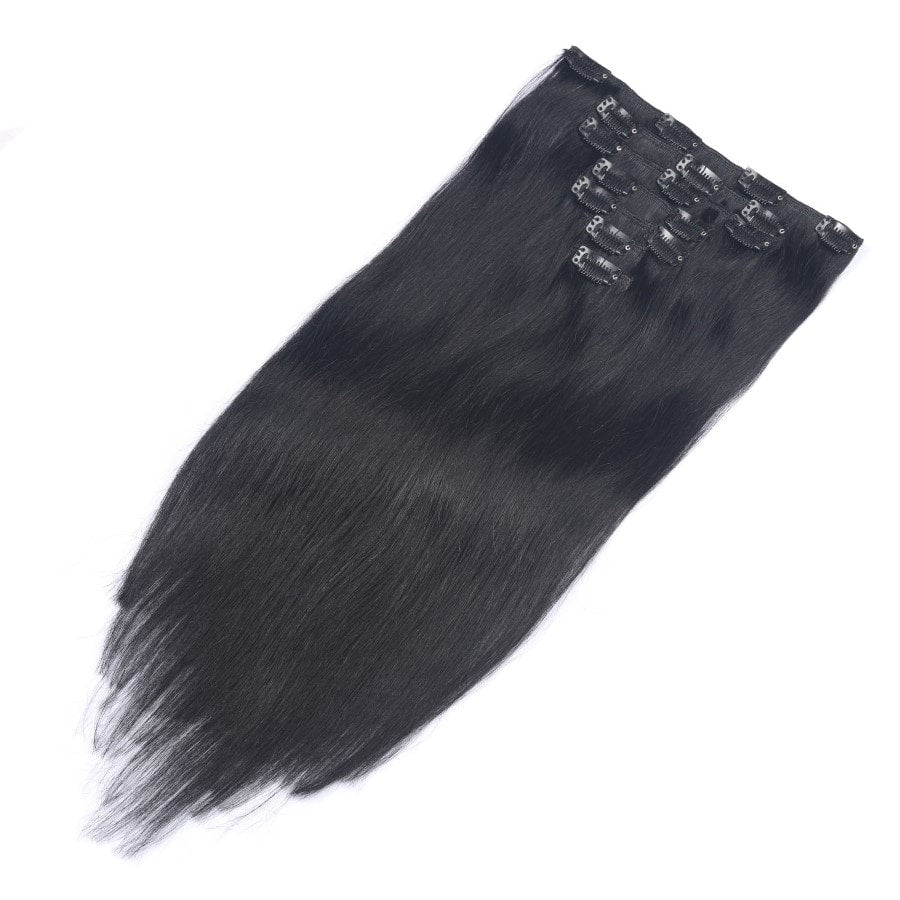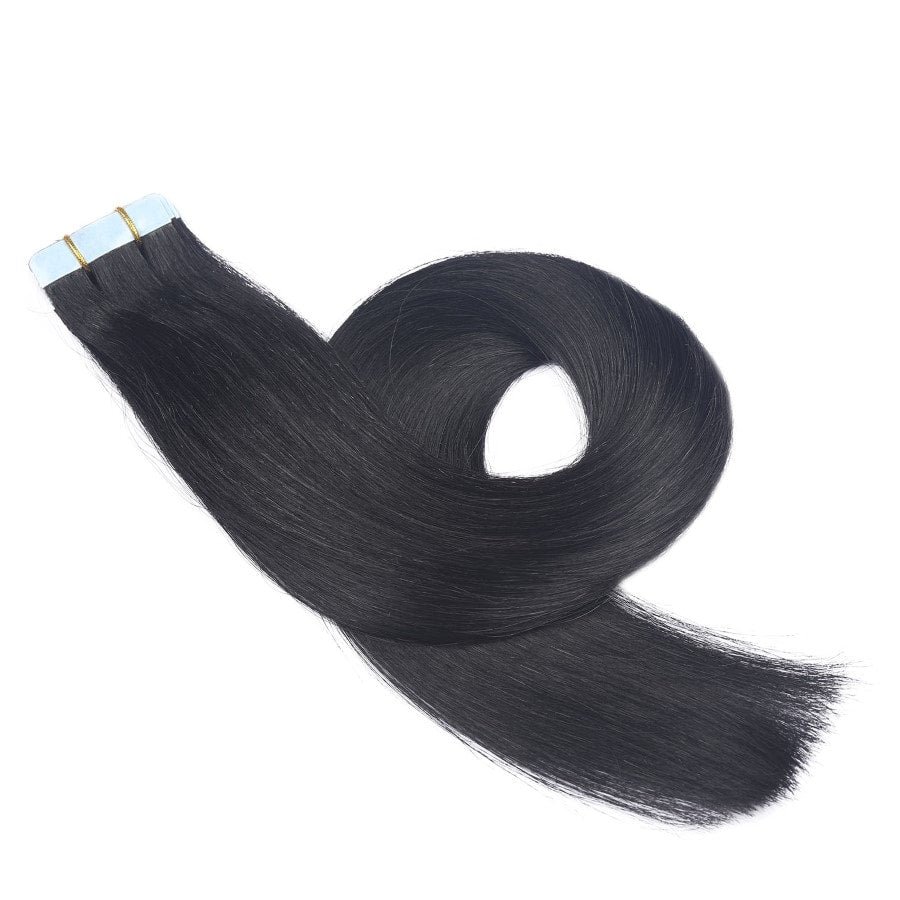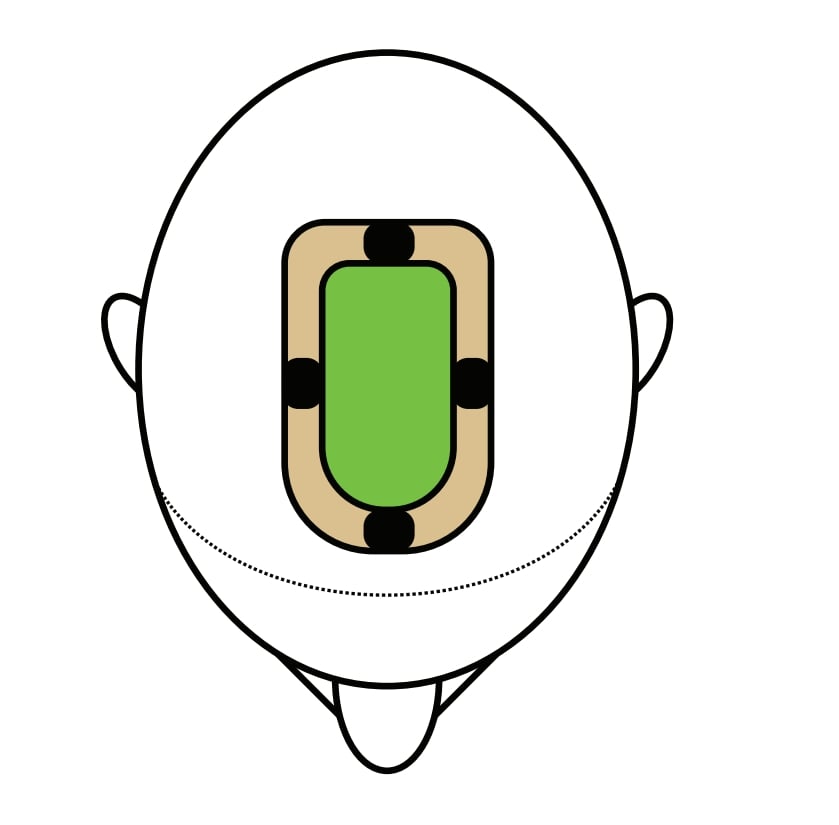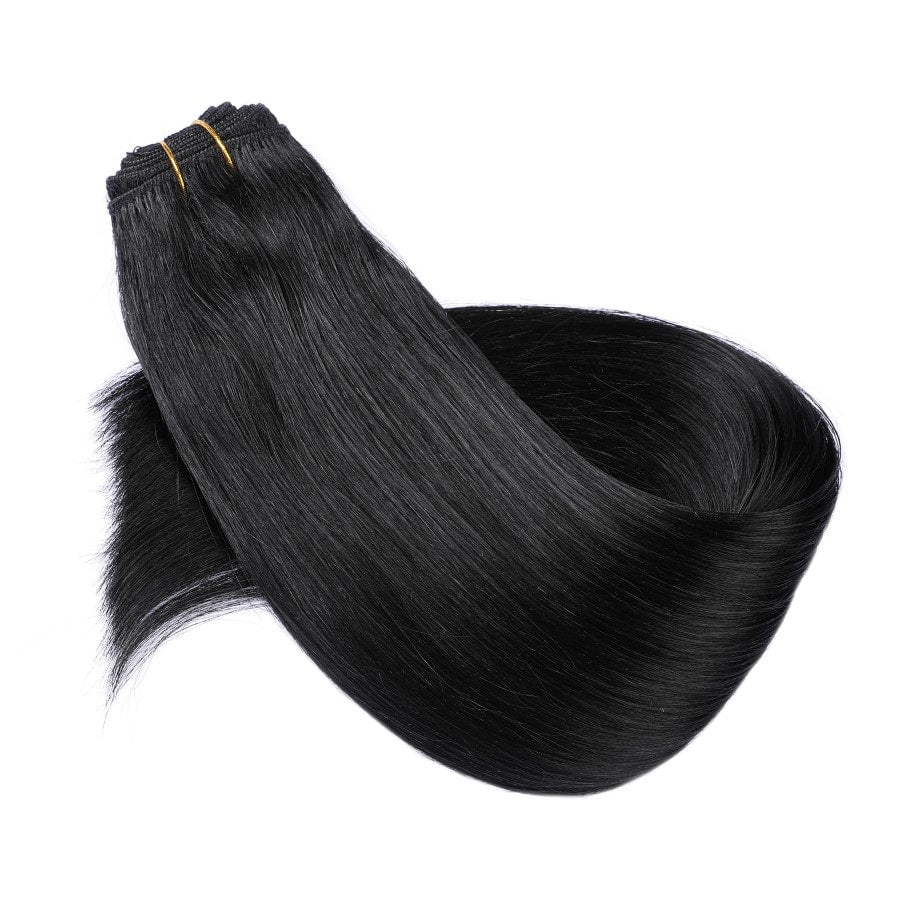Key Takeaways
- Price Differences: Hair extensions range from budget-friendly to luxury, influenced by factors like hair quality, production process, and business model.
- Quality vs. Price: Higher prices don't always mean better quality; it's essential to evaluate the type of hair and production methods.
- Industry Costs: Many companies have inflated prices due to investors, middlemen, and complex operations.
- Tara Hair’s Advantage: By owning our factories and handling everything directly, we offer premium hair extensions at more affordable prices.
- Transparency: Tara Hair clearly labels all products, offering synthetic, human, Remy, and European hair with accurate descriptions.
- Avoiding Mislabeling: Be aware of common industry mislabeling practices and know how to identify genuine hair quality.
- Informed Choices: Understanding the true value and quality of hair extensions helps make smarter purchasing decisions.
Introduction
In the world of beauty and fashion, hair extensions have become a go-to solution for instant volume, length, and style versatility. However, the price range for these extensions can vary significantly, leaving many to wonder: are expensive hair extensions truly worth the investment, or are they merely a status symbol? This blog post aims to dissect the cost differences between luxury and budget-friendly hair extensions, evaluating whether the higher price tags translate to superior quality or if they are inflated by other factors. We'll also explore how Tara Hair offers premium quality extensions at affordable prices by cutting out the middlemen and maintaining transparency in our operations.
Understanding the Cost of Hair Extensions
The Price Spectrum: Budget-Friendly vs. Luxury Extensions
When shopping for hair extensions, you’ll quickly notice the wide range of prices. Budget-friendly options can be found at a fraction of the cost of luxury extensions, but what justifies this disparity? Factors such as the source of the hair, the manufacturing process, and the brand's business model all contribute to the final price.
Factors Influencing Hair Extension Costs
-
Hair Quality: The type of hair used is a significant factor. Synthetic hair is typically the cheapest, followed by human hair, with Remy and European hair often commanding the highest prices due to their superior quality and natural appearance.
-
Production Process: Hand-tied wefts and custom coloring processes increase the labor costs, which are reflected in the price. Machine-made extensions are less expensive but may lack the natural look and feel of hand-tied options.
-
Brand and Marketing: Well-known brands invest heavily in marketing and branding, which can drive up costs. Luxury brands often charge a premium for their reputation and perceived exclusivity.
-
Business Model: Companies backed by investors or those with complex operations involving multiple offices and middlemen need to cover these additional expenses, which are often passed on to the consumer.
Understanding these factors helps to demystify the cost differences and allows you to make a more informed decision when purchasing hair extensions.
Quality vs. Price
Does Higher Price Mean Better Quality?
The common belief is that a higher price tag guarantees better quality, but this isn't always the case in the hair extension industry. While premium materials and craftsmanship do contribute to higher costs, some brands inflate prices due to marketing strategies or the need to cover operational expenses. Therefore, it's crucial to look beyond the price and evaluate the actual quality of the hair extensions.
Evaluating Different Hair Types: Synthetic, Human, Remy, European
-
Synthetic Hair: The most affordable option, synthetic hair is made from artificial fibers. It can mimic the appearance of natural hair but lacks the versatility and durability of human hair. Synthetic extensions are less heat-resistant and have a shorter lifespan.
-
Human Hair: Mid-range in terms of cost, human hair extensions offer a more natural look and feel. They can be styled with heat tools and have a longer lifespan than synthetic hair. However, the quality can vary based on the source and processing methods.
-
Remy Hair: Considered one of the highest quality types, Remy hair is collected in a way that maintains the hair’s cuticles aligned in the same direction. This minimizes tangling and ensures a smoother, more natural appearance. Remy hair extensions are more expensive but offer better longevity and styling versatility.
-
European Hair: Often the most expensive, European hair is known for its fine texture and natural luster. It is sourced from European donors and undergoes minimal processing, retaining its natural quality. European hair extensions are highly sought after for their superior quality and natural integration with various hair types.
By understanding the different types of hair and their associated costs, you can better determine whether the higher price of certain hair extensions is justified and choose the best option for your needs.
The Business Behind the Pricing
Hidden Costs in the Hair Extension Industry
Many consumers are unaware of the hidden costs that can inflate the price of hair extensions. These hidden costs often come from the complex supply chains and operational expenses that some companies have to manage. For instance, dealing with multiple middlemen, maintaining numerous offices, and employing a large workforce can significantly increase overhead costs. These additional expenses are often passed on to the consumer, resulting in higher prices.
Why Some Companies Charge More: Investors, Middlemen, and Complex Operations
-
Investors: Companies backed by investors need to generate substantial profits to provide returns on investments. This often leads to higher pricing structures to meet these financial obligations.
-
Middlemen: The involvement of middlemen in the supply chain can drive up costs. Each intermediary adds their margin, making the final product more expensive by the time it reaches the consumer.
-
Complex Operations: Large companies with multiple offices and a significant number of employees have higher operational costs. These costs are typically factored into the pricing of their products.
Tara Hair's Approach
At Tara Hair, we take a different approach. By handling everything from A to Z directly and owning all our factories in China and India, we eliminate the need for middlemen and reduce operational costs. This allows us to offer high-quality hair extensions at more affordable prices without compromising on quality.
Our streamlined operations mean that we can pass on significant savings to our customers. Unlike competitors who may charge exorbitant prices due to greed or necessity, we focus on delivering value. With Tara Hair, you can get the same, if not better, quality hair extensions for around 40% less than other brands.
By understanding the business behind the pricing, consumers can make more informed choices and avoid paying inflated prices for hair extensions that do not necessarily offer better quality.
Tara Hair's Approach
Direct from Factory to Consumer: Cutting Out the Middlemen
At Tara Hair, we pride ourselves on our direct-to-consumer model. By owning and operating our factories in China and India, we manage every step of the production process. This approach eliminates the need for intermediaries, allowing us to offer premium hair extensions at significantly lower prices. Our customers benefit from the cost savings we achieve by streamlining operations and maintaining full control over quality.
Our Pricing Strategy: Affordable Quality Hair Extensions
We believe that high-quality hair extensions should be accessible to everyone. Our pricing strategy is designed to reflect this belief. By reducing overhead costs and focusing on efficiency, we can provide our customers with top-tier hair extensions without the hefty price tags often associated with luxury brands. With Tara Hair, you get exceptional value for your money, ensuring that you don’t have to compromise on quality due to budget constraints.
Transparency in Hair Quality: Synthetic, Human, Remy, European
Transparency is a cornerstone of our business. We offer a clear distinction between the different types of hair extensions we sell:
- Synthetic Hair: Affordable and great for short-term use.
- Human Hair: Natural look and feel, suitable for regular styling.
- Remy Hair: High-quality hair with cuticles aligned in the same direction, minimizing tangling and enhancing durability.
- European Hair: Premium hair known for its fine texture and natural shine, offering the ultimate in luxury and longevity.
Unlike some competitors who may mislabel or overstate the quality of their products, we ensure that every hair extension we sell is accurately represented. This commitment to honesty helps our customers make informed decisions and trust in the quality they are purchasing.
By choosing Tara Hair, you are not only opting for affordable, high-quality hair extensions but also supporting a business model built on transparency and efficiency.
Myths and Misconceptions
Common Mislabeling Practices: Remy and Virgin Hair
In the hair extension industry, mislabeling is unfortunately common. Terms like "Remy" and "Virgin" hair are often misused to justify higher prices, misleading customers into thinking they are getting superior quality. Here's what these terms actually mean:
-
Remy Hair: True Remy hair is collected in a way that preserves the hair cuticles' alignment, resulting in smoother, less tangle-prone extensions. Some companies falsely label non-Remy hair as Remy to charge more.
-
Virgin Hair: This refers to hair that has never been chemically processed or dyed. It's in its natural state and is typically of higher quality. However, many brands falsely claim their extensions are virgin hair when they have been treated or dyed.
These deceptive practices can lead to consumers paying premium prices for hair that doesn’t meet the standards implied by these labels.
How to Identify Genuine Hair Quality
To avoid being misled, it’s important to know how to identify genuine hair quality:
-
Look for Transparency: Reputable companies will provide detailed information about their hair sourcing and processing methods. They will distinguish clearly between different types of hair (synthetic, human, Remy, European) and their respective qualities.
-
Examine the Cuticles: Genuine Remy hair will have cuticles aligned in the same direction. Non-Remy hair, on the other hand, may have cuticles going in various directions, causing tangling and a less smooth appearance.
-
Check for Uniformity: High-quality hair extensions will have uniformity in texture and color. Any inconsistencies might indicate lower-quality hair or synthetic blends.
-
Test for Chemical Processing: Virgin hair should not show signs of chemical treatment. If the hair feels unusually smooth or has a strong chemical smell, it might have been processed.
At Tara Hair, we are committed to honesty and transparency. We clearly label our products, offering synthetic hair, human hair, Remy hair, and European hair, each with its own quality standards. Our customers can trust that they are getting exactly what they pay for, with no hidden surprises or misleading claims.
By being informed about these myths and misconceptions, you can make better purchasing decisions and avoid overpaying for misrepresented hair extensions.
Conclusion
Making an Informed Decision: What to Look for When Buying Hair Extensions
When purchasing hair extensions, it’s essential to be informed and critical of the options available. Here are key points to consider:
- Quality Verification: Ensure the company provides detailed information about the type of hair they offer. Verify if the terms like Remy, virgin, and human hair are accurately used.
- Price Justification: Understand the factors that contribute to the price, such as hair quality, production processes, and business operations. Be wary of overly high prices that might be inflated due to marketing or operational inefficiencies.
- Company Transparency: Choose companies that are transparent about their sourcing and manufacturing processes. Trustworthy companies will provide clear distinctions between different hair types and their corresponding qualities.
- Customer Reviews and Testimonials: Look for genuine customer feedback and before-and-after photos to gauge the product’s real-world performance and quality.
Why Tara Hair Offers the Best Value for Your Money
At Tara Hair, we are dedicated to providing high-quality hair extensions at affordable prices by eliminating unnecessary costs and middlemen. Our direct-to-consumer approach, coupled with our ownership of factories, allows us to offer premium hair at prices that our competitors cannot match. We pride ourselves on our transparency and commitment to quality, ensuring our customers always know what they are getting.
With Tara Hair, you can enjoy the confidence that comes with premium hair extensions without breaking the bank. We offer a range of hair types, from synthetic to European, each clearly labeled and priced to reflect its quality. Our customers benefit from our efficient operations, ethical practices, and dedication to providing the best value in the market.
In conclusion, expensive hair extensions are not always worth their high price tags. By understanding the factors that influence costs and the common pitfalls in the industry, you can make smarter, more cost-effective choices. Tara Hair stands out by offering high-quality extensions at affordable prices, ensuring that beauty and style are accessible to everyone.
Making an Informed Decision: What to Look for When Buying Hair Extensions
When purchasing hair extensions, it’s essential to be informed and critical of the options available. Here are key points to consider:
- Quality Verification: Ensure the company provides detailed information about the type of hair they offer. Verify if the terms like Remy, virgin, and human hair are accurately used.
- Price Justification: Understand the factors that contribute to the price, such as hair quality, production processes, and business operations. Be wary of overly high prices that might be inflated due to marketing or operational inefficiencies.
- Company Transparency: Choose companies that are transparent about their sourcing and manufacturing processes. Trustworthy companies will provide clear distinctions between different hair types and their corresponding qualities.
- Customer Reviews and Testimonials: Look for genuine customer feedback and before-and-after photos to gauge the product’s real-world performance and quality.
FAQ
-
Q: What types of hair extensions does Tara Hair offer? A: Tara Hair offers synthetic, human, Remy, and European hair extensions.
-
Q: How does Tara Hair keep prices affordable? A: By owning our factories and eliminating middlemen, we reduce costs and pass the savings on to customers.
-
Q: What is Remy hair? A: Remy hair is collected with the cuticles aligned in the same direction, minimizing tangling and ensuring a natural look.
-
Q: How can I verify the quality of hair extensions? A: Look for transparency in the company's sourcing and processing methods, and check for uniformity and cuticle alignment.
-
Q: Why are some hair extensions so expensive? A: High prices can be due to premium materials, complex production processes, and additional business costs like marketing and investor returns.
-
Q: Is synthetic hair a good option? A: Synthetic hair is affordable and suitable for short-term use, but lacks the versatility and durability of human hair.
-
Q: What’s the difference between human hair and European hair? A: European hair is known for its fine texture and natural luster, often considered the highest quality due to minimal processing.
-
Q: How do I know if the hair is truly virgin? A: Virgin hair should be free of chemical processing and dye. Any signs of smoothness or chemical smell may indicate treatment.
-
Q: Can I use heat tools on Tara Hair extensions? A: Yes, our human, Remy, and European hair extensions are heat-friendly and can be styled with hot tools.
-
Q: Why choose Tara Hair over other brands? A: Tara Hair offers high-quality extensions at affordable prices due to our direct-to-consumer model and commitment to transparency.






